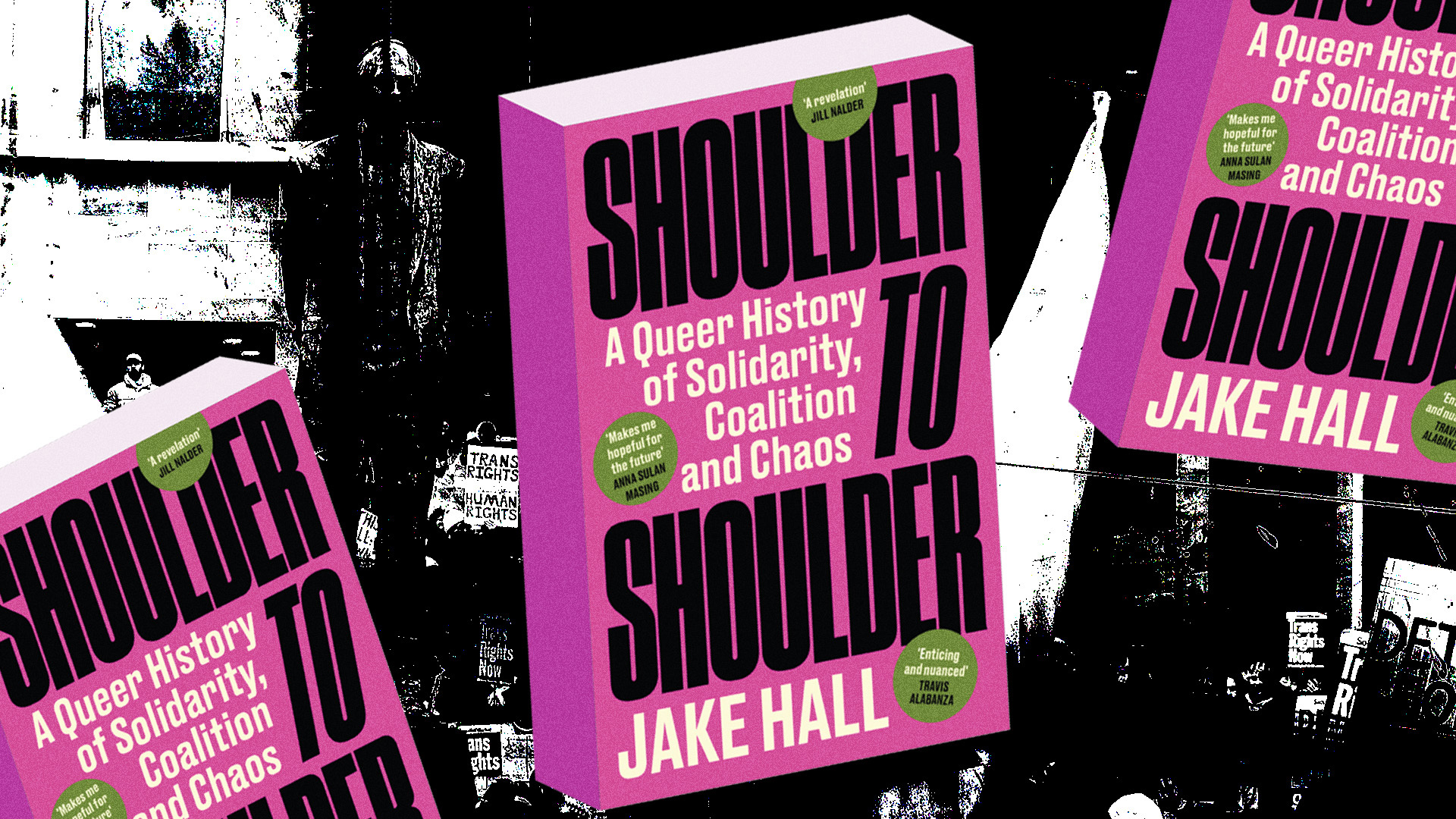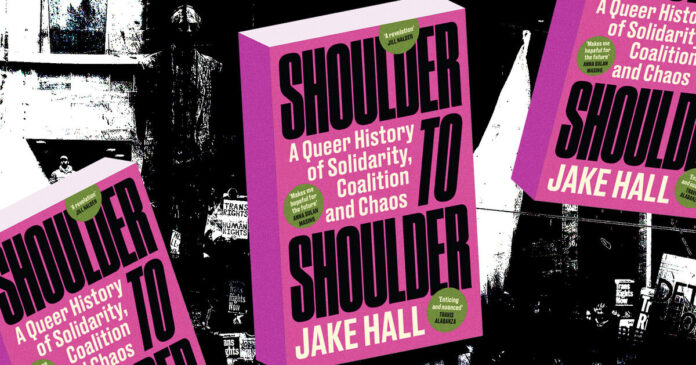
The first time I wrote about sex work activism was before I’d ever done sex work myself. Before long, I was marching through the streets of London’s Soho with hundreds of protestors, brandishing signs with slogans like NO BAD WHORES, JUST BAD LAWS and SEX WORK IS WORK. It quickly became clear to me that sex work activism is inherently anti-carceral, anti-borders, pro-decriminalisation, but there was one chant in particular that fascinated me: ‘No TERFs, no SWERFs.’
These acronyms stand for Trans-Exclusionary Radical Feminists and Sex Worker-Exclusionary Radical Feminists respectively, but they’re misnomers: there’s nothing ‘feminist’ about their politics. Their goal is to police who deserves access to safety and human rights, punishing so-called ‘bad’ women in the process. Here, a caveat: not all trans people are sex workers. Yet, as the, No TERFs, no SWERFs, chant highlights, pearl-clutching campaigners often hate trans communities just as much as they hate workers selling sex for survival. As a result, there’s a truly radical history of solidarity that’s ripe for excavation.
Here, let’s travel back in time to 1970s Marin County, a picturesque pocket of Northern California surrounded by sprawling, verdant redwoods. The area had made national headlines at the beginning of the decade, when a high-profile courtroom shoot-out made it a key battleground for the Black Panthers. Already, radicals had built tight-knit communities in Marin County, with feminist, anti-racist and queer campaigners often living in close proximity to each other. Yet one woman in particular was laying the foundations for an early sex workers’ rights movement.
Margo St James, born in 1937, spent her childhood driving tractors and milking cows on her father’s dairy farm in rural Washington, but she fled the rural life in her mid-teens, leaving behind her husband and to set up a new life in San Francisco. St James initially worked in after-hours clubs to make ends meet, but she had never actually sold sex when she was arrested in 1962. Despite this fact, she was charged both with ‘soliciting in prostitution’ and ‘keeping or residing in a house of ill fame’. Famously, she defended herself by telling the trial judge that she had ‘never turned a trick in her life’; in the judge’s eyes, St James’s knowledge of sex workers’ lingo – which she’d gained through interactions with sex workers in the clubs where she’d worked – was enough to justify conviction on both counts.
Never one to be defeated, St James enrolled in night classes at a law school; before long, she’d learned enough to successfully appeal her conviction. However, this injustice sparked a political flame within St James, which eventually led to a lifetime dedicated to activism.
When St James moved to Marin County in 1970, she found herself surrounded by like-minded activists. ‘I socialised with the housewives who were participating in consciousness-raising groups,’ she wrote, in the foreword for 1989 sex work anthology A Vindication of the Rights of Whores. ‘Elsa Gidlow, a lesbian poet, lived next door and used to push feminist literature under my door.’
The fight for sex workers’ rights has always been linked to the struggles of other marginalised groups. Its core message is that nobody should be criminalised for the work they do to survive when their alternatives are so shitty. Don’t abolish sex work, abolish the conditions – poverty, discrimination, precarity – that continue to make it a viable lifeline for those who rely on it. When whorephobic campaigners rally to shut down strip clubs, they argue that sex workers should get another job. Let’s think critically about this: how many jobs in the world are good jobs? The kind which offer childcare to single mothers or flexible hours for anyone struggling with chronic fatigue or long-term health conditions? What about if you don’t have formal education under your belt, or you don’t want to contend with potential ableism, racism, misogyny and transphobia? What then? Talking about sex work means talking about criminalisation, migration, structural injustice. Unsurprisingly, it sits within a wide nexus of leftist activism.
This is especially true of sex worker activism and trans rights. As we have established, not all trans people are sex workers, yet trans communities – trans women in particular – are overrepresented in sex work, largely because a lack of healthcare means paying extortionate prices to go private. Sex work can be a means to make that cash quickly, all the while cashing in on society’s fetishisation of trans bodies. St James was seemingly aware of these links, and set about making her activist efforts queer-inclusive from the get-go.
St James was specifically inspired by – and played a key role in – an organisation named WHO (Whores, Housewives and Others). ‘“Others” meant lesbians but it wasn’t being said out loud yet, even in those liberal bohemian circles,’ she explained. At the time, St James was cleaning houses and getting to know the local housewives. ‘I saw the way all these [marginalised groups] were treated,’ she said in a 2013 interview with Bitch Media. So, she brought them together. ‘The housewives, especially, were really excited to meet the whores, so I invited them all over for a little meeting,’ she recalled. ‘A couple of the women even traded places for a few days. I thought it went really well!’
At the time, marginalised groups across Marin County had come to trust the newly appointed sheriff, Richard Hongisto, known locally for his liberal values. Ironically, St James actually became a sex worker after being wrongfully charged; she began seeing clients periodically in order to pay her bills. Yet she’d also gained plenty more first-hand experience in the way sex workers were criminalised and, over the years, she’d been appalled by the so-called ‘prostitute stings’ she saw on a regular basis. In late 1972, she saw an upscale brothel raided by policemen decked out in riot gear. ‘[They seemed] high, really up, turned on, their eyes sparkling, nostrils flaring,’ she wrote in an account of that night, which ended with the brothel’s madam either falling or being pushed out of a third-storey window onto a cement courtyard. Street sex workers weren’t safe either; they were seen as a scourge on the landscape, so laws sought to push them underground, into dangerous working conditions. St James raised these issues with Hongisto when she bumped into him at a party. In her words, she ‘cornered him in a hot tub’ and asked what would need to be done to protect sex workers. He responded bluntly: ‘Someone from the victim class has to speak out. That’s the only way the issue is going to be heard.’
St James took his words to heart. On May Day 1973, she announced the formation of COYOTE, an acronym for Call Off Your Tired Old Ethics, inspired by a ‘coyote hunter’ nick- name given to her on a wild mushroom-hunting trip. St James debuted a COYOTE letterhead featuring a howling dog along- side spiky, aggressive text, and vowed to support sex workers – especially marginalised sex workers, who faced the double bind of whorephobia combined with racism, transphobia and other forms of prejudice. Two weeks later, on Mother’s Day, she announced a bail fund and the recruitment of COYOTE members, who offered legal assistance and self-defence classes to sex workers in need.
COYOTE had a huge queer presence. Not only was St James directly inspired by the queer and trans activists that had long stood in solidarity with sex workers, these communities often shared ‘beats’ – spots to solicit, either for cruising or for street sex work. In 2021, Carol Queen, PhD – an influential sex educator affiliated with San Francisco’s iconic sex store, Good Vibrations – said of St James: ‘Because I’ve been involved in the sex-positive movement, the queer movement and the sex workers’ rights movement, I think about Margo as an inspir- ational figure in all three.’
In their authoritative book Revolting Prostitutes, co-authors Juno Mac and Molly Smith flesh out a timeline of this shared marginalisation. They specifically look back to the Second World War archetype of the ‘disease-ridden prostitute’, scapegoated as a symbolic enemy of the state, an impure succubus looking to ensnare her victims. According to the authors, she was often depicted as an ‘archetypal femme fatale’ with a ‘cigarette between her lips, a tight dress, and a wicked smile’.
Smith and Mac draw parallels between ‘these questions about the duplicity of the sexualised body’ and wider discourse around ‘queer and gender non-conforming people’:
Trans women are often questioned about their ‘biological’ status: a demand that invariably reveals an excessive focus on their genitals. A trans woman is constantly targeted for public harassment; at the same time, if she is ‘read’ as trans, she is seen to be threatening as a man – accused of trespassing into bathrooms to commit sexual violence. Conversely, if she can pass for cisgender, she is regarded as dangerous, liable to ‘trap’ someone into having sex with her unawares.
This fascination with gatekeeping the status of ‘womanhood’ has been prevalent throughout feminist history. It’s been a question of identifying the ‘good’ women – predominantly cis, white, straight, middle-class and ‘ladylike’ – who seemingly deserve protection, alienating other women in the process. The British suffragettes, for example, won the right for women to vote in 1918. However, the law only applied to property-owning women over the age of 30; it therefore excluded vast swathes of working-class women, including the most marginalised. By this logic, queer, trans and sex-working women have long been lumped into the same categories and discriminated against in similar ways. In the eyes of puritans, they’re all ‘bad’ women.

